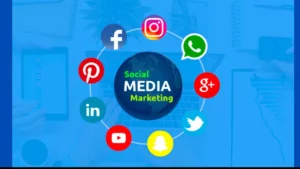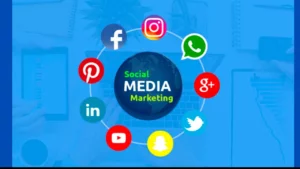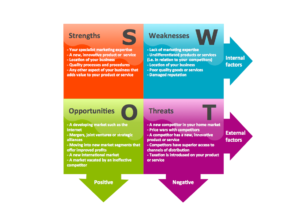
SOCIAL MEDIA PLATFORMS TO ENGAGE
What Is Social Media Marketing (SMM)?
Social media marketing also known as digital marketing and e-marketing is the use of social media—the platforms on which users build social networks and share information—to build a company’s brand, increase sales, and drive website traffic. In addition to providing companies with a way to engage with existing customers and reach new ones, SMM has a purpose-built data analytics that allow marketers to track the success of their efforts and identify more ways to engage.
For complete knowledge about social media marketing read Pritish Kumar Halder article:
Why Is Social Media Marketing So Powerful?
The power of social media marketing is driven by the unparalleled capacity of social media in three core marketing areas: connection, interaction, and customer data.
Connection
Not only does social media enable businesses to connect with customers in ways that were previously impossible, but there is also an extraordinary range of avenues to connect with target audiences—from content platforms like YouTube and social sites like Facebook to microblogging services like Twitter.
Interaction
The dynamic nature of the interaction on social media—whether direct communication or passive “liking”—enables businesses to leverage free advertising opportunities from electronic word-of-mouth recommendations between existing and potential customers. For example, businesses can measure their “social equity”—a term for the ROI return on investment from their SMM campaigns.
Customer Data
A well-designed social media marketing plan delivers another invaluable resource to boost marketing outcomes: customer data. Rather than being overwhelmed by the 3Vs of big data (volume, variety, and velocity), SMM tools have the capacity not only to extract customer data but also to turn this gold into actionable market analysis—or even to use the data to crowdsource new strategies.
How Social Media Marketing Works
As platforms like Facebook, Twitter, and Instagram took off, social media transformed not only the way we connect with one another but also the way businesses are able to influence consumer behavior—from promoting content that drives engagement to extracting geographic, demographic, and personal information that makes messaging resonate with users.
SMM Action Plan
The more targeted your social media marketing strategy is, the more effective it will be. Hootsuite, a leading software provider in the social media management space, recommends the following action plan to build an SMM campaign that has an execution framework as well as performance metrics:
Action Plan
- Align SMM goals to clear business objectives
- Learn your target customer (age, location, income, job title, industry, interests)
- Conduct a competitive analysis on your competition (successes and failures)
- Audit your current SMM (successes and failures)
- Create a calendar for SMM content delivery
- Create best-in-class content
Track performance and adjust SMM strategy as needed
Customer Relationship Management Compared to traditional marketing, social media marketing has several distinct advantages, including the fact that SMM has two kinds of interaction that enable targeted customer relationship management tools: both customer-to-customer and firm-to-customer. In other words, while traditional marketing tracks customer value primarily by capturing purchase activity, SMM can track customer value both through purchases and product referrals.
Shareable Content
Businesses can also convert the amplified interconnectedness of into the creation of “sticky” content, the marketing term for attractive content that engages customers at first glance, gets them to purchase products, and then makes them want to share the content. This kind of word-of-mouth advertising not only reaches an otherwise inaccessible audience, but also carries the implicit endorsement of someone the recipient knows and trusts.
Earned Media
SMM is also the most efficient way for a business to reap the benefits of another kind of earned media for brand exposure from any method other than paid advertising: customer-created product reviews and recommendations.
Viral Marketing
Another SMM strategy that relies on the audience to generate the message is viral marketing, a sales technique that attempts to trigger the rapid spread of word-of-mouth product information. Once a marketing message is being shared with the general public far beyond the original target audience, it is considered viral—a very simple and inexpensive way to promote sales.
Customer Segmentation
Because customer segmentation is much more refined on social media marketing (SMM) than on traditional marketing channels, companies can ensure they focus their marketing resources on their exact target audiences.
Tracking Benchmark
According to Sprout Social, the most important social media marketing (SMM) barometer is to track focus on the customer engagement, impressions ; reachability ; share of voice ; referrals ; and conversions. However, another very important criteria is focus on the business response rate/time.
Conclusion
When a business is trying to determine which metrics to track in the sea of data that social media generates, the rule is always to align each business goal to a relevant metric. If your business goal is to grow conversions from an SMM campaign by 15% within three months, then use a social media analytics tool that measures the effectiveness of your campaign against that specific target.
Reference
https://www.investopedia.com/terms/s/social-media-marketing-smm.asp












I agree with your point of view, your article has given me a lot of help and benefited me a lot. Thanks. Hope you continue to write such excellent articles.
very informative articles or reviews at this time.
Hi there to all, for the reason that I am genuinely keen of reading this website’s post to be updated on a regular basis. It carries pleasant stuff.
I like the efforts you have put in this, regards for all the great content.
I am truly thankful to the owner of this web site who has shared this fantastic piece of writing at at this place.
Awesome! Its genuinely remarkable post, I have got much clear idea regarding from this post
Pretty! This has been a really wonderful post. Many thanks for providing these details.
Hi there to all, for the reason that I am genuinely keen of reading this website’s post to be updated on a regular basis. It carries pleasant stuff.
I just like the helpful information you provide in your articles
naturally like your web site however you need to take a look at the spelling on several of your posts. A number of them are rife with spelling problems and I find it very bothersome to tell the truth on the other hand I will surely come again again.
I like the efforts you have put in this, regards for all the great content.
This was beautiful Admin. Thank you for your reflections.
Very well presented. Every quote was awesome and thanks for sharing the content. Keep sharing and keep motivating others.
This is my first time pay a quick visit at here and i am really happy to read everthing at one place
Very well presented. Every quote was awesome and thanks for sharing the content. Keep sharing and keep motivating others.
You’re so awesome! I don’t believe I have read a single thing like that before. So great to find someone with some original thoughts on this topic. Really.. thank you for starting this up. This website is something that is needed on the internet, someone with a little originality!
Nice post. I learn something totally new and challenging on websites
I do not even understand how I ended up here, but I assumed this publish used to be great
I do not even understand how I ended up here, but I assumed this publish used to be great
Your article gave me a lot of inspiration, I hope you can explain your point of view in more detail, because I have some doubts, thank you.